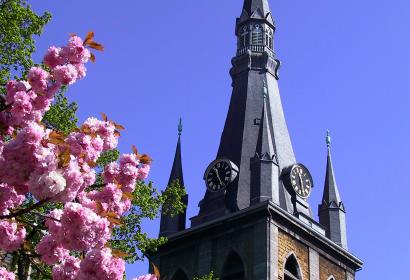Choose your country/language to continue your visit
Forget dusty, boring museums. There are many to discover in Wallonia, each with its own universe, its own atmosphere. Some are vibrant, others quirky or immersive. All are incredibly welcoming, aiming at making learning fun. Exploring them is a pure delight, whether you are coming on your own, with family or friends.
Keyword(s)
Location
Category
- (-) Remove Animal park/zoo/aquarium filter Animal park/zoo/aquarium
- (-) Remove Religious heritage filter Religious heritage
- (-) Remove Train/tram/tourist train filter Train/tram/tourist train
- Abbey (11) Apply Abbey filter
- Adventure park (19) Apply Adventure park filter
- Amusement park (2) Apply Amusement park filter
- An electric scooter ride (9) Apply An electric scooter ride filter
- Boat hire (4) Apply Boat hire filter
- Brewery (7) Apply Brewery filter
- Châteaux (37) Apply Châteaux filter
- Donkey ride (14) Apply Donkey ride filter
- Educational farm (11) Apply Educational farm filter
- Escape Room (19) Apply Escape Room filter
- Farm golf (5) Apply Farm golf filter
- Fort, citadel and fortification (8) Apply Fort, citadel and fortification filter
- Grottoes and caves (15) Apply Grottoes and caves filter
- Kayak, canoe or rafting (37) Apply Kayak, canoe or rafting filter
- Lake, water body or waterway (42) Apply Lake, water body or waterway filter
- Lasergame & paintball (9) Apply Lasergame & paintball filter
- Mini-Golf (15) Apply Mini-Golf filter
- Museum or Interpretation Centre (268) Apply Museum or Interpretation Centre filter
- Park (castles) (20) Apply Park (castles) filter
- Provincial estate - Domain (5) Apply Provincial estate - Domain filter
- Recreational park (38) Apply Recreational park filter
- River cruises (12) Apply River cruises filter
- Segway ride (1) Apply Segway ride filter
- Thermal baths (2) Apply Thermal baths filter
- Water attraction (38) Apply Water attraction filter
- Water park or centre (10) Apply Water park or centre filter
Weather depending
Pets allowed
54 results
- L'Espérance: Nismes touristic train
 © WBT - Sébastien RobertyViroinval
© WBT - Sébastien RobertyViroinvalL'Espérance: Nismes touristic train
Itinerary presenting the iconic locations in Nismes: castle, park, Fondry des Chiens... - Bouillon's zoological park
 © WBT Denis ClosonBouillon
© WBT Denis ClosonBouillonBouillon's zoological park
This zoological park in Bouillon (Belgian Luxembourg) features no less than 90 different species, which visitors can admire along a 2 km trail. - The Jardin des Hiboux: a wildlife park in Bièvre
 © Josine NguyênBièvre
© Josine NguyênBièvreThe Jardin des Hiboux: a wildlife park in Bièvre
In the Jardin des Hiboux, visitors can get closer to birds of prey, join demonstrations to see them unfold their wings and fly... There is much to discover about nature there, how honey is made for example. A perfect day out with the children. - The Bonne-Espérance abbey at Vellereille-les-Brayeux (Hainaut)
 © Collège de Bonne-EspéranceVellereille-les-Brayeux
© Collège de Bonne-EspéranceVellereille-les-BrayeuxThe Bonne-Espérance abbey at Vellereille-les-Brayeux (Hainaut)
This superb abbey, founded in 1126 in the countryside near Binche, is the only one in the Hainaut region to have survived the French Revolution intact. - Meet animals along this walk in La Ligule | Mignault
 © La LiguleMignault
© La LiguleMignaultMeet animals along this walk in La Ligule | Mignault
Take a stroll in La Ligule, a superb estate stretching along 3 hectares and featuring 3 gîtes, to meet animals along the way... - Saint Paul’s Cathedral (Liège)© WBT - Joseph JeanmartLiège
Saint Paul’s Cathedral (Liège)
Built in the 10th century, Saint Paul collegiate church will be upgraded to the rank of cathedral in the 19th century, following the destruction of Saint Lambert cathedral during the French revolution.

